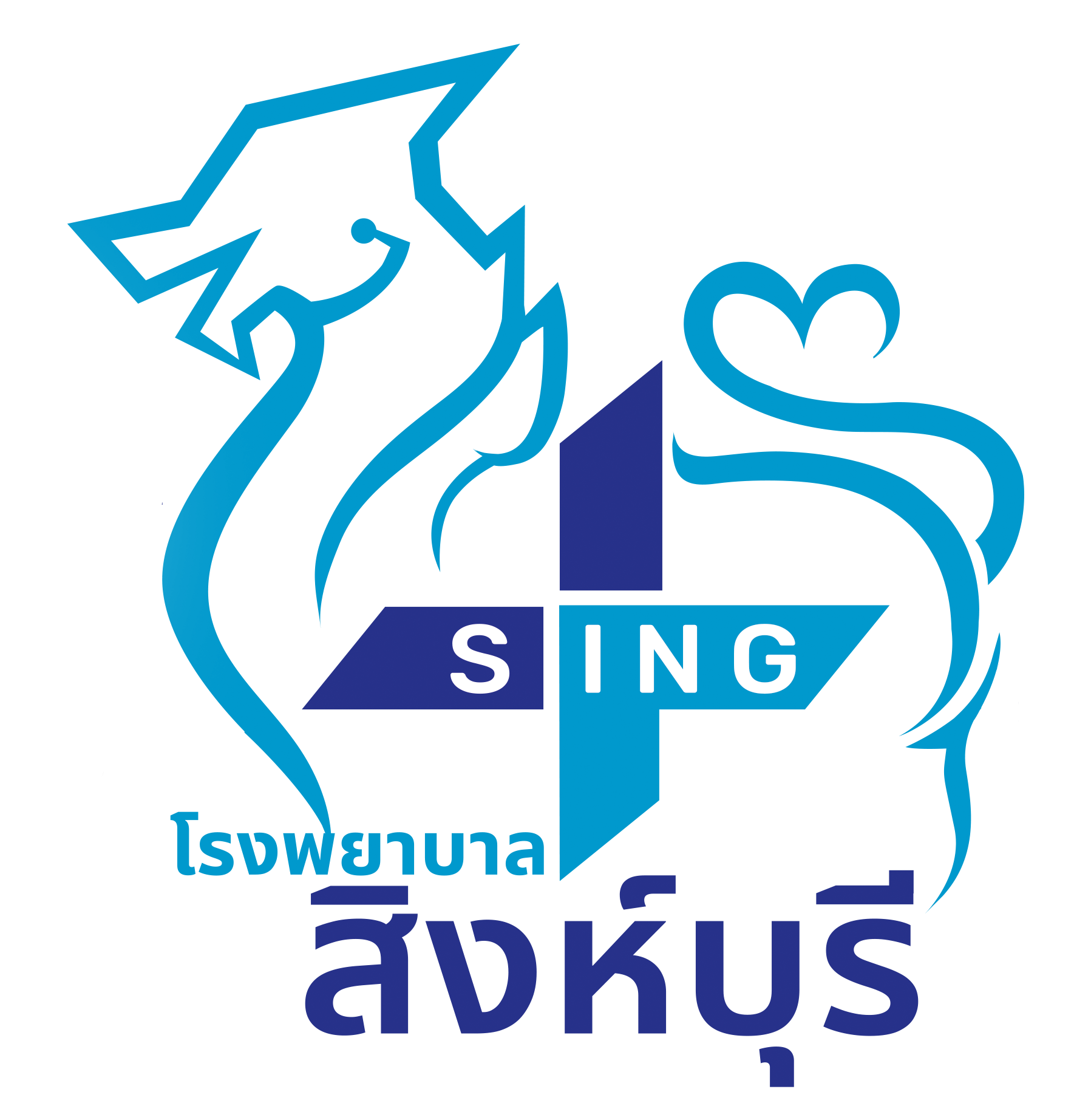การประเมินภาพถ่ายรังสีของผู้ป่วยที่ได้รับการผ่าตัดเปลี่ยนข้อเข่าเทียมทั้งสองข้าง ด้วยวิธีธรรมดาเปรียบเทียบกับการใช้คอมพิวเตอร์ช่วยผ่าตัด
คำสำคัญ:
คอมพิวเตอร์ช่วยผ่าตัด, ข้อเทียม, เปลี่ยนข้อเข่าเทียมบทคัดย่อ
เพื่อศึกษาเปรียบเทียบประสิทธิภาพของการผ่าตัดเปลี่ยนข้อเข่าเทียมโดยวิธีใช้คอมพิวเตอร์ช่วยในการผ่าตัดและการผ่าตัดโดยวิธีธรรมดา โดยการเปรียบเทียมมุม mechanical axis (MA) และมุม component alignment ในผู้ป่วยที่ได้รับการผ่าตัดเปลี่ยนข้อเข่าทั้งสองข้าง โดยเป็นการผ่าตัดวิธีธรรมดาหนึ่งข้างและเป็นการใช้คอมพิวเตอร์ช่วยผ่าตัดในเข่าอีกข้างหนึ่ง รูปแบบการศึกษาแบบศึกษาย้อนหลัง (Retrospective study) วิธีดำเนินการ ศึกษาในจำนวนข้อเข่าทั้งหมด 52 เข่า จากผู้ป่วยจำนวน 26 ราย ในช่วงระหว่างเดือนกุมภาพันธ์ 2558 ถึง มกราคม 2560 ที่ได้รับการวินิจฉัยว่าเป็นข้อเข่าเสื่อมทั้งสองข้างและได้รับการผ่าตัดเปลี่ยนข้อเข่าเทียมทั้งโดยการผ่าตัดวิธีธรรมดาหนึ่งข้างและวิธีใช้คอมพิวเตอร์ช่วยผ่าในด้านตรงข้าม นำผู้ป่วยมาถ่ายภาพรังสีท่ายืนในระบบดิจิทัล แล้วทำการวัดและเปรียบเทียบมุม mechanical axis (MA), femoral component in coronal plane (FFC), tibial component in coronal plane (FTC), femoral component in sagittal plane (SFC) และมุม tibial component in sagittal plane (STC) ผลการศึกษาพบว่าการผ่าตัดโดยวิธีใช้คอมพิวเตอร์ ช่วยเพิ่มความแม่นยำของมุม MA มากกว่าการผ่าตัดวิธีธรรมดาอย่างมีนัยสำคัญทางสถิติ (178.12° ± 1.56° และ 176.15°± 1.85° ตามลำดับ, p = 0.00) ส่วนมุม FFC นั้นพบว่ามีความแม่นยำสูงในการผ่าตัดโดยวิธีใช้คอมพิวเตอร์ช่วยผ่าเมื่อเทียบกับการผ่าตัดวิธีธรรมดาอย่างมีนัยสำคัญทางสถิติ (88.58° ± 1.30° และ 87.38° ± 2.02° ตามลำดับ, p = 0.07) และในกลุ่มการผ่าตัดโดยวิธีใช้คอมพิวเตอร์ช่วยผ่าพบมีการกระจายของข้อมูลและค่า outliers น้อยกว่ากลุ่มที่ได้รับการผ่าตัดแบบธรรมดา ส่วนมุม SFC และ STC นั้นไม่พบความแตกต่างของทั้งสองวิธีการผ่าตัด (p > 0.05) แต่พบว่าค่า outlier ของกลุ่มที่ได้รับการผ่าตัดแบบธรรมดานั้นมีแนวโน้มที่มากกว่ากลุ่มการผ่าตัดโดยวิธีใช้คอมพิวเตอร์ช่วย (FTC 3.8% และ 0%, SFC 26.90% และ 15.4% ตามลำดับ) โดยผู้ป่วยทั้งหมดในการศึกษานี้ไม่มีการเปลี่ยนกลุ่มการผ่าตัดโดยวิธีใช้คอมพิวเตอร์ช่วยผ่ามาเป็นการผ่าตัดแบบธรรมดา และไม่พบภาวะแทรกซ้อนทั้งในขณะผ่าตัดและหลังผ่าตัด
สรุป การใช้คอมพิวเตอร์ช่วยในการผ่าตัด เป็นเครื่องมือที่ปลอดภัยและช่วยเพิ่มความแม่นยำของ MA ทำให้ตำแหน่งการวางข้อเข่าเทียมดีขึ้น รวมทั้งยังลดจำนวนของ outlier หลังการผ่าตัด อย่างไรก็ตามการศึกษาผลทางคลินิกรวมถึงการรวบรวมตัวอย่างที่มากขึ้นเป็นสิ่งจำเป็นในการศึกษาครั้งต่อไป
Downloads
เอกสารอ้างอิง
Stindel E, Briard JL, Merloz P, Plaweski S, Dubrana F, Lefevre C, et al. Bone morphing: 3D morphological data for total knee arthroplasty. Comput Aided Surg. 2002;7(3):156-68.
Jeffery RS, Morris RW, Denham RA. Coronal alignment after total knee replacement. J Bone Joint Surg Br. 1991;73(5):709-14.
Ek ET, Dowsey MM, Tse LF, Riazi A, Love BR, Stoney JD, et al. Comparison of functional and radiological outcomes after computer-assisted versus conventional total knee arthroplasty: a matched-control retrospective study. J Orthop Surg (Hong Kong). 2008;16(2):192-6.
Rand JA, Coventry MB. Ten-year evaluation of geometric total knee arthroplasty. Clin Orthop Relat Res. 1988(232):168-73.
Ranawat CS, Boachie-Adjei O. Survivorship analysis and results of total condylar knee arthroplasty. Eight- to 11-year follow-up period. Clin Orthop Relat Res. 1988(226):6-13.
Ritter MA, Faris PM, Keating EM, Meding JB. Postoperative alignment of total knee replacement. Its effect on survival. Clin Orthop Relat Res. 1994(299):153-6.
Bargren JH, Blaha JD, Freeman MA. Alignment in total knee arthroplasty. Correlated biomechanical and clinical observations. Clin Orthop Relat Res. 1983(173):178-83.
Wasielewski RC, Galante JO, Leighty RM, Natarajan RN, Rosenberg AG. Wear patterns on retrieved polyethylene tibial inserts and their relationship to technical considerations during total knee arthroplasty. Clin Orthop Relat Res. 1994(299):31-43.
Jenny JY, Boeri C. [Computer-assisted implantation of a total knee arthroplasty: a case-controlled study in comparison with classical instrumentation]. Rev Chir Orthop Reparatrice Appar Mot. 2001;87(7):645-52.
Bathis H, Perlick L, Tingart M, Luring C, Perlick C, Grifka J. Radiological results of image-based and non-image-based computer-assisted total knee arthroplasty. Int Orthop. 2004;28(2):87-90.
Matziolis G, Krocker D, Weiss U, Tohtz S, Perka C. A prospective, randomized study of computer-assisted and conventional total knee arthroplasty. Three-dimensional evaluation of implant alignment and rotation. J Bone Joint Surg Am. 2007;89(2):236-43.
Pang HN, Yeo SJ, Chong HC, Chin PL, Ong J, Lo NN. Computer-assisted gap balancing technique improves outcome in total knee arthroplasty, compared with conventional measured resection technique. Knee Surg Sports Traumatol Arthrosc. 2011;19(9):1496-503.
Shinozaki T, Gotoh M, Mitsui Y, Hirai Y, Okawa T, Higuchi F, et al. Computer-assisted total knee arthroplasty: comparisons with the conventional technique. Kurume Med J. 2011;58(1):21-6.
Kim YH, Kim JS, Yoon SH. Alignment and orientation of the components in total knee replacement with and without navigation support: a prospective, randomised study. J Bone Joint Surg Br. 2007;89(4):471-6.
Cheng T, Pan XY, Mao X, Zhang GY, Zhang XL. Little clinical advantage of computer-assisted navigation over conventional instrumentation in primary total knee arthroplasty at early follow-up. Knee. 2011.
Ajwani SH, Jones M, Jarratt JW, Shepard GJ, Ryan WG. Computer assisted versus conventional total knee replacement: A comparison of tourniquet time, blood loss and length of stay. Knee. 2011.
Hoffart HE, Langenstein E, Vasak N. A prospective study comparing the functional outcome of computer-assisted and conventional total knee replacement. J Bone Joint Surg Br. 2012;94(2):194-9.
Choong PF, Dowsey MM, Stoney JD. Does accurate anatomical alignment result in better function and quality of life? Comparing conventional and computer-assisted total knee arthroplasty. J Arthroplasty. 2009;24(4):560-9.
Blakeney WG, Khan RJ, Wall SJ. Computer-assisted techniques versus conventional guides for component alignment in total knee arthroplasty: a randomized controlled trial. J Bone Joint Surg Am. 2011;93(15):1377-84.
Mason JB, Fehring TK, Estok R, Banel D, Fahrbach K. Meta-analysis of alignment outcomes in computer-assisted total knee arthroplasty surgery. J Arthroplasty. 2007;22(8):1097-106.
Zhang GQ, Chen JY, Chai W, Liu M, Wang Y. Comparison between computer-assisted-navigation and conventional total knee arthroplasties in patients undergoing simultaneous bilateral procedures: a randomized clinical trial. J Bone Joint Surg Am. 2011;93(13):1190-6.
Mullaji A, Kanna R, Marawar S, Kohli A, Sharma A. Comparison of limb and component alignment using computer-assisted navigation versus image intensifier-guided conventional total knee arthroplasty: a prospective, randomized, single-surgeon study of 467 knees. J Arthroplasty. 2007;22(7):953-9.
Huang TW, Hsu WH, Peng KT, Hsu RW, Weng YJ, Shen WJ. Total knee arthroplasty with use of computer-assisted navigation compared with conventional guiding systems in the same patient: radiographic results in Asian patients. J Bone Joint Surg Am. 2011;93(13):1197-202.
Perlick L, Bathis H, Perlick C, Luring C, Tingart M, Grifka J. Revision total knee arthroplasty: a comparison of postoperative leg alignment after computer-assisted implantation versus the conventional technique. Knee Surg Sports Traumatol Arthrosc. 2005;13(3):167-73.
Longstaff LM, Sloan K, Stamp N, Scaddan M, Beaver R. Good Alignment After Total Knee Arthroplasty Leads to Faster Rehabilitation and Better Function. The Journal of Arthroplasty. 2009;24(4):570-8.
ดาวน์โหลด
เผยแพร่แล้ว
รูปแบบการอ้างอิง
ฉบับ
ประเภทบทความ
สัญญาอนุญาต
ลิขสิทธิ์ (c) 2022 โรงพยาบาลสิงห์บุรี

อนุญาตภายใต้เงื่อนไข Creative Commons Attribution-NonCommercial-NoDerivatives 4.0 International License.
บทความที่ได้รับการตีพิมพ์เป็นลิขสิทธิ์ของโรงพยาบาลสิงห์บุรี
ข้อความที่ปรากฏในบทความแต่ละเรื่องในวารสารวิชาการเล่มนี้เป็นความคิดเห็นส่วนตัวของผู้เขียนแต่ละท่านไม่เกี่ยวข้องกับโรงพยาบาลสิงห์บุรี และบุคคลากรท่านอื่นๆในโรงพยาบาลฯ แต่อย่างใด ความรับผิดชอบองค์ประกอบทั้งหมดของบทความแต่ละเรื่องเป็นของผู้เขียนแต่ละท่าน หากมีความผิดพลาดใดๆ ผู้เขียนแต่ละท่านจะรับผิดชอบบทความของตนเองแต่ผู้เดียว







